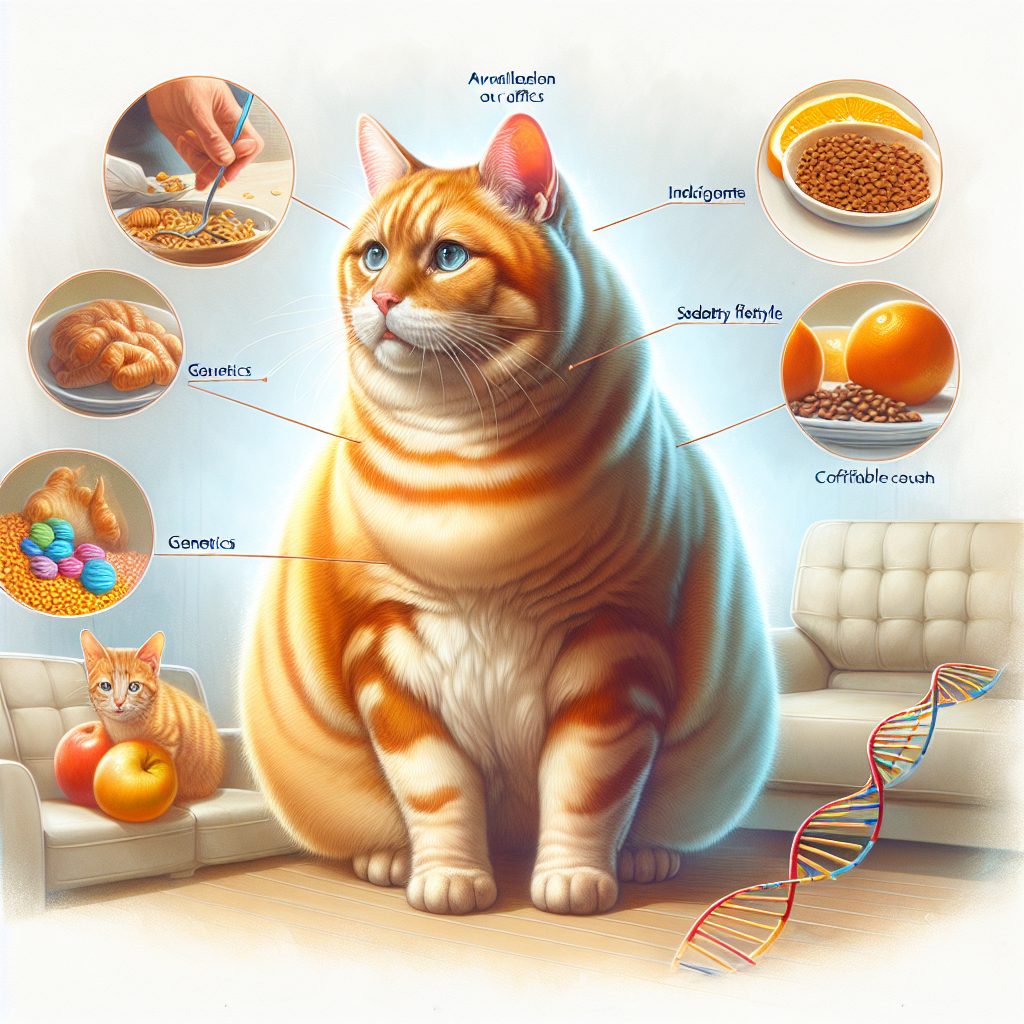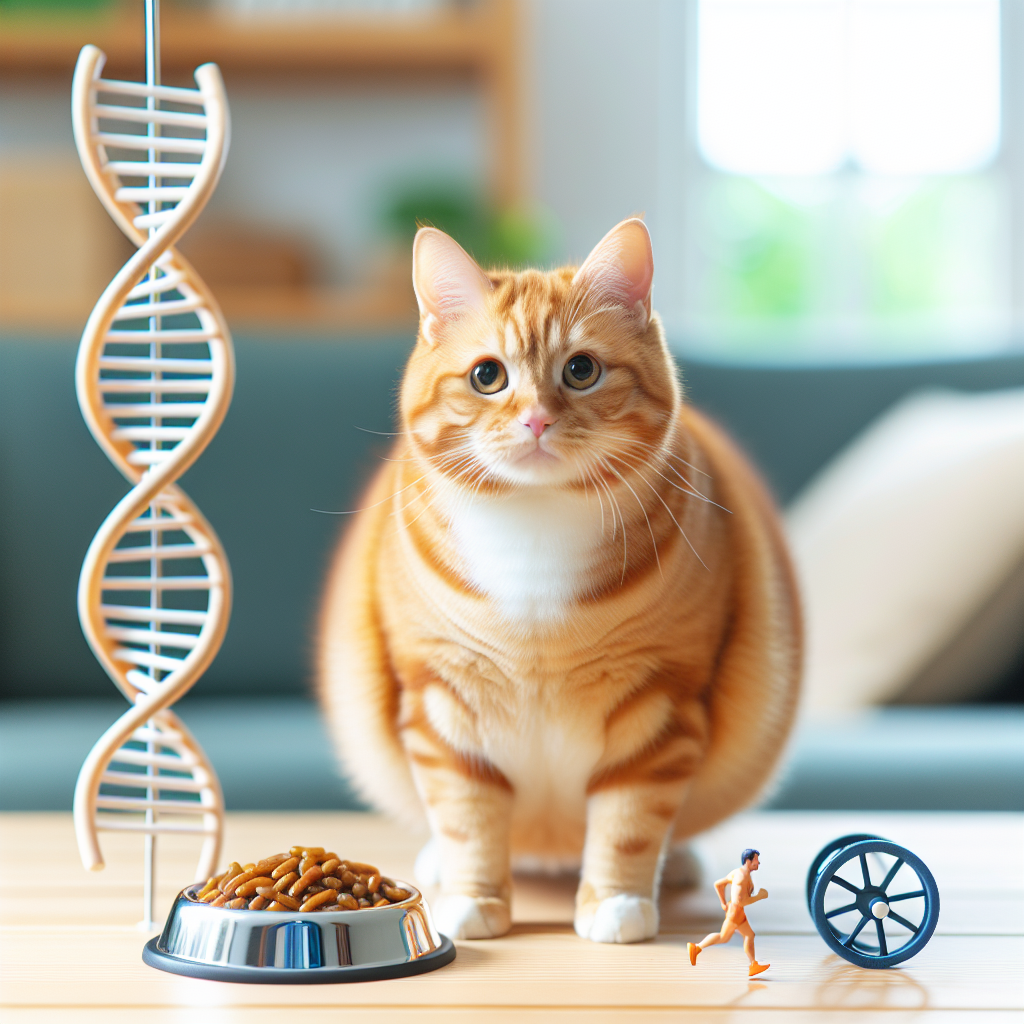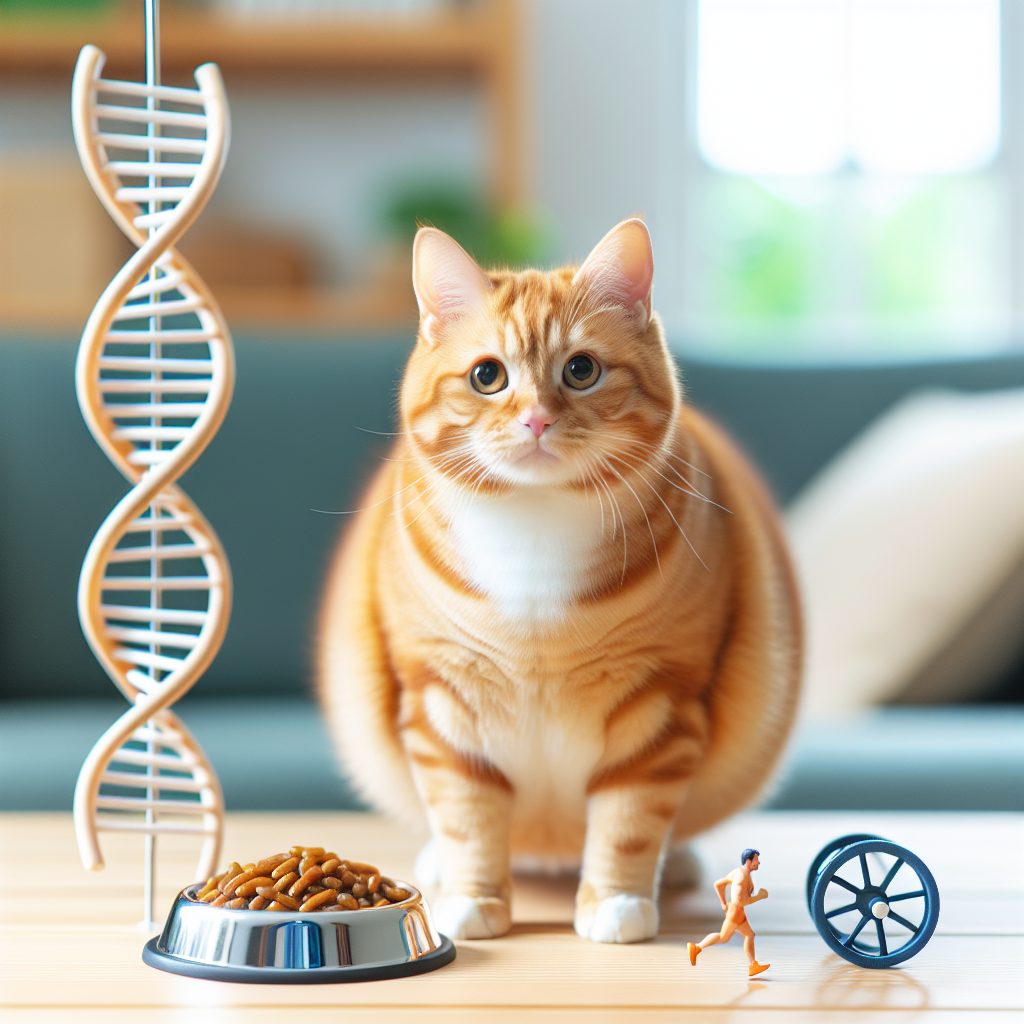Did you know that orange tabby cats have a reputation for being more prone to weight gain? While it may not be true for every single cat, studies have shown that orange tabbies, particularly males, tend to have a higher risk of becoming overweight or obese. If you’re a proud owner of an adorable orange tabby, it’s important to understand this potential predisposition and take appropriate measures to ensure your feline friend maintains a healthy weight. In this article, we will explore the reasons behind these weight gain tendencies and provide you with practical tips to keep your orange tabby fit and happy. Whether you already have an orange tabby or are considering getting one, read on to discover more about this fascinating feline phenomenon.

Factors that contribute to weight gain in cats
Common causes of weight gain in cats
Weight gain in cats can be influenced by a variety of factors. While genetics, gender, age, neutering or spaying, activity level, feeding habits, and health conditions all play a role, it is essential to understand how these factors specifically impact orange tabby cats. By examining each of these factors, we can gain valuable insights into why orange tabby cats may be prone to weight gain and how to manage their weight effectively.
Genetic factors
Genetics play a significant role in a cat’s susceptibility to weight gain. While all cats, including orange tabby cats, can experience weight gain, some genetic factors may increase their predisposition to this issue. This could be due to inherited traits related to metabolism, body composition, or caloric processing. It’s important to recognize that genetics alone cannot fully explain weight gain; they interact with other factors discussed in this article.
Gender differences
Gender differences also play a role in weight gain among orange tabby cats. Female cats tend to have a higher risk of weight gain compared to males. This difference may be attributed to variations in metabolism and body composition. Female cats generally have a slower metabolic rate, making it easier for them to gain weight. However, it’s important to note that individual variations exist, and not all female orange tabby cats will experience weight gain.
Age
As cats age, their activity levels and metabolism naturally decline, making them more prone to weight gain. This is true for all cats, including orange tabby cats. Three distinct stages in a cat’s life contribute to weight gain potential: the kitten phase, adolescence, and the adult and senior stages. Each stage comes with its own set of challenges when it comes to weight management and requires appropriate adjustments in feeding and physical activity.
Neutering or spaying
Neutering or spaying is a common practice that can have an impact on a cat’s weight. While these procedures offer several benefits, they can also alter a cat’s metabolism and behavior. Neutered or spayed cats tend to have a slower metabolic rate, which can lead to weight gain if their caloric intake is not adjusted accordingly. Additionally, behavioral changes, such as reduced activity levels or increased food-seeking behaviors, can contribute to weight gain in orange tabby cats after these procedures.
Activity level
The activity level of a cat plays a crucial role in weight management. Some orange tabby cats may naturally have a lower activity level, making them prone to weight gain. It is essential to engage orange tabby cats in regular exercise and playtime to maintain their overall health and prevent weight gain. Indoor cats may require more intentional environmental enrichment to foster physical activity, while outdoor cats have more opportunities for naturally active behavior.
Feeding habits
Feeding habits directly affect a cat’s weight. Establishing the right feeding routine for your orange tabby cat is crucial in preventing weight gain. Understanding their caloric needs based on factors like age, size, and activity level ensures that they receive proper nutrition without excessive weight gain. Meal frequency and portion control are essential aspects of feeding habits that should be carefully managed. Avoiding free-feeding, where food is available at all times, helps prevent excessive consumption, while monitoring treats and snacks ensures balanced nutrition.
Health conditions
Certain health conditions can contribute to weight gain in cats, including orange tabby cats. Conditions such as hypothyroidism, diabetes, or hormonal imbalances can affect a cat’s metabolism and lead to weight gain. Regular veterinary check-ups and health screenings are crucial in identifying and addressing any underlying health conditions that may be contributing to weight gain. Early detection and intervention play a significant role in managing a cat’s weight effectively and ensuring their overall well-being.
The relationship between coat color and weight gain
Research on coat color and weight gain in cats
While there is limited research specifically focused on the relationship between coat color and weight gain in cats, studies have shown some interesting findings. Orange tabby cats, known for their distinctive coat color, have been associated with a slightly higher risk of weight gain compared to cats of other coat colors. However, it’s important to note that coat color alone is not the sole determinant of weight gain in cats, and other factors mentioned previously are equally important.
Specific studies on orange tabby cats
Some studies have specifically explored the association between orange tabby cats and weight gain. These studies suggest that orange tabby cats may have a genetic predisposition to increased body weight. However, it is crucial to interpret these findings with caution, as other factors like genetics, gender, age, neutering or spaying, activity level, and feeding habits all interact to contribute to a cat’s weight.
Contradictory findings
While some studies suggest that orange tabby cats may be more prone to weight gain, there are also contradictory findings. Some studies have found no significant correlation between orange tabby coat color and weight gain. These contradictory findings highlight the complexities involved in understanding the relationship between coat color and weight gain in cats.
Potential reasons for weight gain in orange tabby cats
There are several potential reasons why orange tabby cats may be prone to weight gain. One possibility is that the genetic factors associated with their coat color may also play a role in their metabolism and caloric processing. Additionally, orange tabby cats may have genetic traits related to body composition that make them more susceptible to weight gain. However, it is important to remember that not all orange tabby cats will experience weight gain, and individual variation exists within this coat color.


